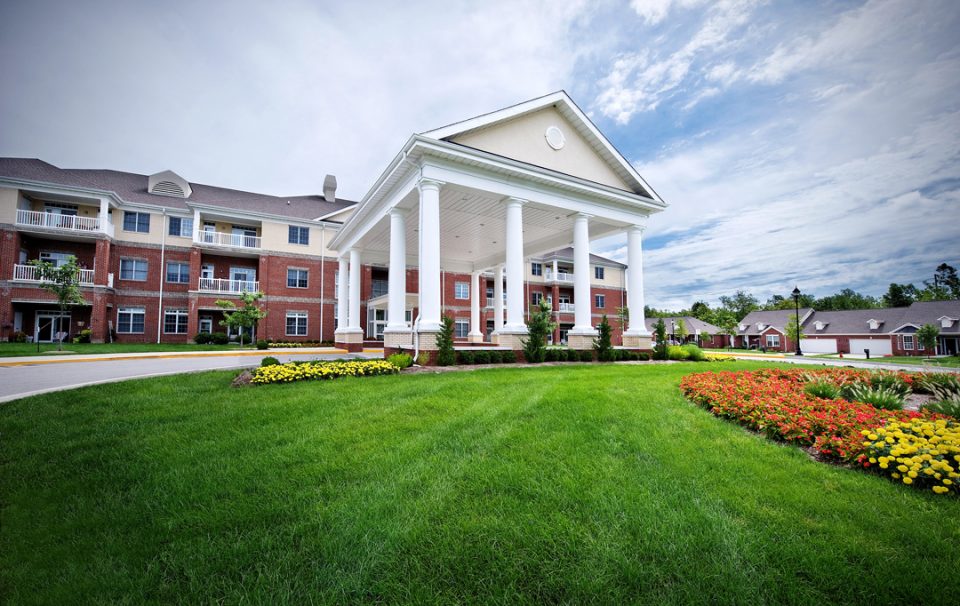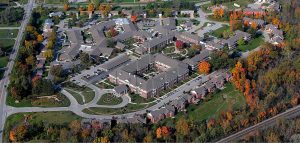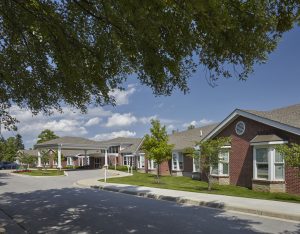Creating a Real Sense of Community

Westminster Village North, Inc., in Indianapolis, Indiana, is a thriving senior living community that took a hard look at how they could remain viable in a changing marketplace. K2M Design, formerly InterDesign, partnered with Westminster Village North to take a bold step towards their future; and this is their story.
Communities may be organic by nature, but that doesn’t mean they develop automatically. You can’t simply take a heterogeneous group of people, place them in a complex of buildings, and watch a happy community emerge. It could happen, but it’s unlikely.
The most successful and sustainable Life Plan communities (the term Leading Age advocates for continuing care retirement communities) become that way through thoughtful planning. They have a clear mission, strong leadership, and are willing to reach out for the expertise they need. As non-profit senior living communities face more and stronger competition, particularly from the for-profit sector, establishing a strong sense of community can provide a powerful advantage that will keep vacancy rates low.
Westminster Village North in Indianapolis is a shining example of a Life Plan community that has evolved from what was typical retirement housing just a generation ago. Originally constructed as a tuberculosis sanitarium, Westminster Village North has expanded its offerings to stay ahead of the changing marketplace while enhancing a strong sense of community since its 1971 opening.
Click to download this article >
Staying up-to-date
Cities and towns evolve over time, but many senior communities appear to be stuck at some point in the past. Often, that point was the most recent remodeling project. The amenities, the décor, the furniture — everything becomes a snapshot of what was popular at that time.
Shelley Rauch, MBA, HFA has been Westminster Village North’s executive director for nearly two decades. Recognizing that the only way a community can stay competitive is to evolve with the times, she was a strong advocate of the master planning process. Early in her tenure, she worked with the community’s board of directors to assess the health of the community’s infrastructure, and then to develop a plan that would update that infrastructure while enhancing Westminster Village North’s standing in the marketplace.
“I’ve always been a believer that good competition makes everybody better,” Rauch explains. “In the Indianapolis market, we’ve been able to study what other people have done and learn from the best practices.
 Curb appeal is key
Curb appeal is key
Impressions of a community are formed long before a prospect sets foot in the Welcome Center. Websites and marketing materials play a role, but the strongest impressions happens when people drive through the front entrance and around the community. Realtors talk about the importance of curb appeal when selling a home, and it’s just as important when promoting a Life Plan community.
When K2M Design developed Westminster Village North’s first master plan in 2000, enhancing curb appeal was a primary objective. “Residents love the mature trees that surround the community because they enhance both privacy and connections to nature,” explains Jerry Cripps, an architect for the firm who has overseen most of the improvements. “Unfortunately, the foliage was so dense that people couldn’t see the community from the road.” The master plan called for the development of a three-story independent living building as the community’s centerpiece. The front of the building and its impressive portico faced the road, and the team recommended clearing a corridor along the entry drive. “Now, when drivers go by, that building is the first thing they see.”

Reflecting surrounding neighborhoods
When the sanitarium was built in 1917, its area was sparsely populated agricultural land. In the late 1960s, farm fields began to give way to suburban development.
During the 1940s, Indianapolis built a dam about three miles north of the property to provide a reliable water supply. The project created the Geist Reservoir, and the land around the banks began to be developed during the 1970s and 1980s. The prime lakefront sites drew luxury-home developers, and the area now known as Geist earned a reputation as one of the city’s most affluent districts. Land prices climbed, and local farmers sold out to developers.
Most of the housing around Westminster Village North is occupied by middle- and upper-middle-class families, and the community reflects that image. The northern edge of the community is made up of single-family ranch homes that provide a smooth transition to the two- and three-story buildings. When K2M Design remodeled the nursing care facility, it provided a separate entry with a portico that completed the architectural style of the homes. “We thought a lot about the neighborhood feel as we designed the most recent additions,” recalls Cripps. “Because they were so close to the road, we refrained from building multiple stories. We thought that would change the whole impression of coming down the drive through the community.”
Not only does the community blend visually with surrounding neighborhoods — the level and style of finishes and amenities in the independent and assisted-living units are consistent with what local homeowners expect. That congruity also contributes to the strong sense of community.
About K2M Design & InterDesign
K2M Design®, Inc. continues our strategic growth with the acquisition of The InterDesign Group, located in Indianapolis, Indiana. K2M Design officially acquired InterDesign on May 1, 2017, integrating a talented team of Architects, Interior Designers, Project Managers, and Construction Administrators.
Having completed over 200 projects in the Senior Living and Healthcare markets, the team brings a depth of talent to K2M. Stronger together, we will continue to be leaders in the market, designing for the next generation of seniors.